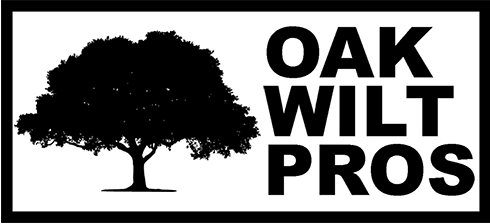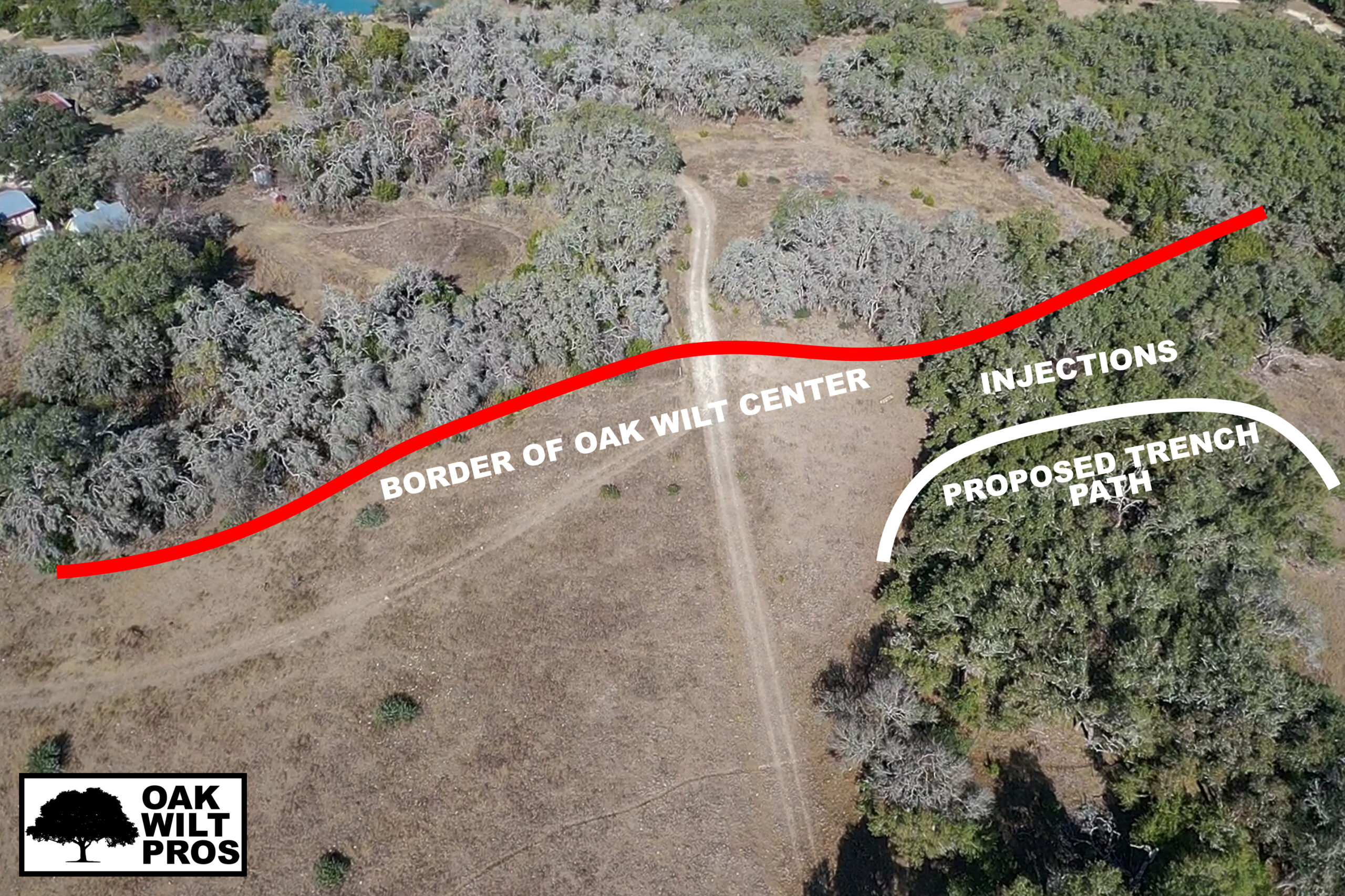Are the majestic oaks dotting your prospective property truly healthy? Oak wilt inspections can be key! Discerning the vitality of these stalwart trees requires a seasoned eye for detail, as oak wilt, a formidable adversary, can lurk beneath a seemingly tranquil canopy.
Knowledge is power.
Subtle yet distinct, the signs of oak wilt demand expert interpretation to safeguard the investment and splendor of your property. Early detection is paramount to staving off widespread arboreal loss.
Unveiling Oak Wilt: Key Symptoms
To accurately diagnose oak wilt, one must scrutinize the foliage for telltale discolorations and patterns of decay. Leaves typically exhibit a distinct browning at the margins that progressively moves inward, a symptom known as vein banding or marginal necrosis. Additionally, leaves may fall prematurely, a phenomenon especially conspicuous in the midst of a verdant summer. Expertise is necessary to distinguish these symptoms from other ailments, as they are not exclusive to oak wilt.
Recognition of oak wilt’s impact also extends to observing the broader tree mortality patterns. An adept analysis will note clusters of affected oaks, often following root graft networks or patterns of insect vectoring. This affliction progresses swiftly, and the mortality wave—a wavefront of dying trees—can signal the presence of an aggressive oak wilt infection. Timely discernment of these patterns is crucial as it directly influences the feasibility and success of intervention strategies.
Decoding Foliar Indicators
Oak wilt diagnosis hinges on specific leaf symptoms—necrosis—detectable in affected oaks’ foliage.
Mortality waves signify aggressive oak wilt, keying us into the urgency of ameliorative measures.
To differentiate oak wilt from similar pathogens, experts examine the leaves for veinal necrosis and undue leaf drop—indicative yet not exclusive symptoms.
Effective management requires early identification of vein banding among other foliar indicators, which precedes potentially severe damage to the oak population.
Understanding Tree Mortality Patterns
Tree mortality due to oak wilt can unfold in discernible patterns, indicative of the disease’s spread within a stand of oaks.
- Clustered Decline: Trees exhibit symptoms in close proximity, suggesting root graft transmission.
- Wavefront Propagation: A progressive line of tree deaths may indicate directed pathogen movement.
- Seasonal Consistency: Symptoms often manifest and peak during specific times of the year, or at least become more noticeable during these times.
- Host Specificity: Certain species of oaks succumb more readily, exposing species-based vulnerability patterns.
Recognizing these patterns is imperative for early detection, often preceding visible symptoms.
Accurate diagnosis is contingent upon understanding these mortality cues, enabling timely and appropriate management actions.
The Value of a Pre-Purchase Oak Wilt Inspection
A thorough inspection can illuminate hidden arboreal ailments, offering insight into the health and longevity of a property’s treasured oaks.
Informed by such assessments, prospective buyers grasp the potential financial and ecological implications, empowering them to make judicious investments in wooded real estate.
Highlighting vulnerable trees, the inspection delineates a clear path for preemptive care, mitigating future losses, and safeguarding the sylvan charm of the property.
Anticipating Property Costs
Prospective buyers should consider the financial implications of oak wilt on a property. These can ripple outwards, affecting not just treatment costs, but also property value and aesthetics.
Untreated oak wilt can escalate, leading to extensive tree loss and increased expense.
A pre-purchase inspection identifies present issues, allowing for an estimation of immediate and future costs associated with oak wilt management. Addressing the problem early can result in significantly lower expenditure and reduced tree mortality.
Our detailed reports outline potential expenses, equipping property buyers with foresight into necessary budget allocations. This positions them to negotiate terms or reassess their investment, considering the potential losses and costs required for effective oak wilt management. Without this knowledge, buyers risk “buying blind,” unintentionally inheriting the previous owner’s arboreal challenges.
Preserving Property Aesthetics
Oak wilt can ravage the lush canopy of oaks that contribute to a property’s charm and curb appeal, necessitating proactive management.
- Identify early signs of oak wilt to initiate timely interventions
- Regular inspections by professionals to assess tree health
- Implementing a tailored oak wilt management plan
- Prompt treatment to contain and prevent further spread
- Educating property owners on maintaining tree vigor
Timely diagnosis and intervention preserve the visual and ecological value of oaks.
Proactive oak wilt management sustains the property’s natural elegance and maintains its desirability.
Diagnosing Oak Wilt Amid Time Constraints
Rapid assessment of oak wilt is pivotal during pre-purchase oak wilt inspections or when managing tree health on owned land. Given the time-sensitive nature of real estate transactions, specifically during an option period, recognizing oak wilt signs expeditiously becomes imperative.
In scenarios where traditional laboratory diagnostics are impeded by protracted result timelines, our inspection protocols employ advanced symptomatology and site analysis. By integrating expertise in foliar symptom recognition with an understanding of oak wilt’s distinctive patterns of spread, we endeavor to circumvent the delays intrinsic to lab-based confirmation.
When conventional lab diagnostics are nonviable, we focus on discernible indicators and ecological signs on-site. Our report compiles these observations, offering stakeholders a measured judgment on potential oak wilt presence and impact, without the extended waiting period for laboratory confirmation.
Alternatives to Diagnostic Sampling
When diagnostic sampling for oak wilt is impractical, visual assessments and historical analysis serve as primary tools.
- Visual Inspection of Symptoms: Checking for foliar patterns, such as leaf discoloration, veining and wilt, often indicative of oak wilt.
- Environmental Assessment: Evaluating the tree’s surroundings for factors that may contribute to or exacerbate oak wilt.
- Historical Review of the Area: Assessing past incidents of oak wilt in the vicinity to understand the potential risk to the subject trees.
Relying on expert symptomatology allows us to draw preliminary conclusions rapidly.
Advanced knowledge of disease ecology aids in distinguishing oak wilt from other pathogens or stressors.
Expert Analysis in Lieu of Lab Results
Laboratory results are not always requisite for reliable diagnostics. Seasoned arborists recognize the exigency of swift oak wilt assessments when time is not a luxury.
Our field expertise is honed to discern subtle distinctions between oak wilt and look-alike maladies. Meticulously documented symptoms and landscape history serve as our foundational reference points.
Our methodology intertwines with a profound understanding of oak ecology, ensuring a high accuracy rate in lieu of direct laboratory verification. Immediate recognition of abnormal visual clues is pivotal in our assessment.
We bridge the gap between symptom detection and confirmatory lab results, providing practical recommendations based on experiential knowledge. This rapid turnaround is essential during time-sensitive transactions.
Future tree health and property value may hinge on our expert analysis, guiding timely and informed decision-making.
Benefits of Regular Oak Wilt Inspections for Owners
Regular inspections provide a proactive approach to the health and longevity of oak trees, safeguarding the natural charm and ecological balance of your property. These evaluations detect early signs of oak wilt, often before it becomes visibly rampant or beyond manageable intervention.
By establishing a consistent schedule of inspections, owners can identify patterns of infection and initiate preventive treatments that can thwart the spread of this insidious disease. Insightful assessments offer the foresight required to protect against the potential decimation of oak populations, which are keystones in local ecosystems.
Knowledge gleaned from regular inspections empowers owners with the ability to maintain a thriving arboreal landscape. These strategic check-ups serve as fundamental investments in the sustainability and aesthetic value of your property’s treasured oaks.
Early Detection Strategies
Early detection of oak wilt is pivotal, leveraging timely interventions to mitigate extensive tree loss. Through diligent observation of foliar symptoms, a precise diagnosis may be established, informing suitable management practices.
Long-Term Oak Wilt Management Plans
A comprehensive oak wilt management plan hinges on continuous monitoring and preventive action.
For enduring success, a multifaceted approach is crucial—a synergy of treatment, prevention, and education. This plan encompasses both immediate remediation efforts and strategies for sustainable health, integrating fungicidal injections, sanitation measures, and targeted educational initiatives for property owners. Such an approach mitigates the spread of the pathogen and fortifies the resilience of the oaks.
Regular inspections form the backbone of effective oak wilt management. These systematic evaluations pinpoint areas requiring attention, enabling prompt interventions tailored to the landscape’s specific needs. Addressing symptomatic trees rapidly is imperative to quell the fungus’s advancement and preserve the property’s ecological value.
Lastly, fostering a proactive mindset among stakeholders is pivotal. Communicating the importance of vigilance and stewardship empowers owners to participate in the health of their trees actively. By establishing a culture of care and preparedness, long-term oak wilt management transcends mere treatment—it embodies a commitment to preserving the legacy of these majestic oaks for generations to come.

